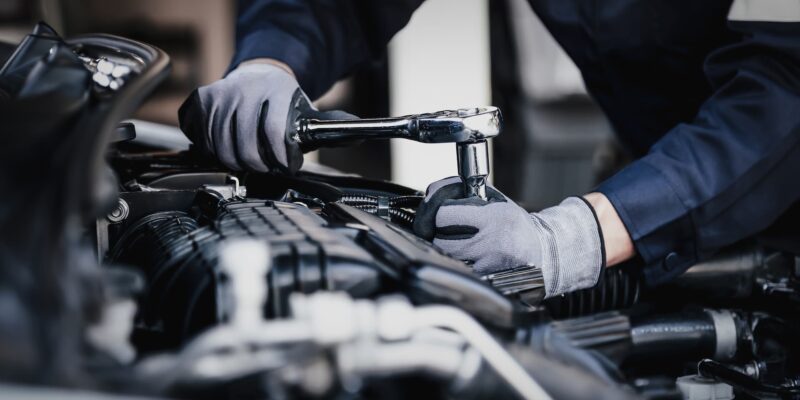
In a rapidly evolving automotive industry, the move toward going paperless in auto repair is no longer simply a trend—it is a strategic imperative. Modern repair facilities are leveraging digital tools to replace traditional paper-based workflows, creating efficiencies, improving customer experience and laying the groundwork for sustainable growth. This transformation is reshaping how inspections are conducted, documented and communicated.
Why Paperless Inspections Matter in Auto Repair
The cost of paper-based workflows
Traditional paper inspection forms, checklists and work orders carry hidden costs. Technicians spend time filling out forms by hand, service advisors juggle stacks of paperwork, and archives of physical documents consume space and are prone to misplacement or degradation. Paper records also limit visibility and accessibility. In contrast, transitioning to digital workflows means that data capture, retrieval and sharing become far more efficient. Studies show that paper-based reports can cost fleets substantial hours just in manual data transcription.
Customer expectations and transparency
Vehicle owners today expect the same convenience and clarity from their automotive service as they do from other industries. Paper-only inspections give limited visibility into what technicians find or recommend. When data, photos and videos are offered digitally, customers feel more engaged and informed—improving trust and satisfaction. According to insight in the industry, digital documentation substantially increases transparency and speeds up approvals.
Data integrity and historical tracking
When inspection data resides in paper files, retrieval and correlation are difficult. Digital systems allow for structured data capture, searchability, archives and analytics. This means a repair facility can track the condition of a vehicle over time, present inspection history to the owner and make proactive recommendations. That level of record-keeping elevates service quality and fosters long-term customer relationships.
Key Components of a Paperless Inspection Strategy
Digital inspection checklists and mobile tools
Automotive repair shops implementing paperless inspections deploy mobile devices (tablets or smartphones) with inspection software. Technicians use these tools to work through tailored checklists, capture readings, log findings and attach photos or videos. This replaces clipboards and pen with a structured, guided digital process. The checklist can change dynamically based on vehicle make, model or condition.
Visual documentation and annotations
One of the most impactful features of going paperless is the ability to attach visual evidence to inspection items. For example:
- A photo of a worn brake pad with an arrow annotation marking the thinning thickness
- A video of a belt few seconds from failure
- A comparison image showing both the item in good condition and its degraded state
These visual cues make the inspection tangible to the customer and help technicians communicate issues more effectively.
Cloud-based storage and integrated workflow
Once an inspection is completed digitally, the data is uploaded, stored and linked to the customer’s profile. This enables:
- Quick access to previous inspections for follow-up visits
- Cross-referencing of vehicle history and repair work
- Use of analytics to identify recurring failure patterns or technician training needs
Furthermore, digital workflows often integrate with work-order, parts-inventory and billing systems, reducing duplication of effort and human error.
Instant customer delivery and communication
Instead of printing a paper inspection sheet and waiting for the customer to review it in the lobby, shops can deliver the full inspection report via email or text immediately. The customer can view it from their phone, ask questions and approve work remotely. This accelerates decision-making, reduces lift-time idle, and enhances operational flow. The earned time-savings translate into higher productivity.
Benefits of Adopting a Paperless Inspection Model
Efficiency gains and reduced process delays
By digitising inspection workflows you remove steps such as: finding the correct paper form, manually transcribing information, filing and retrieving stacks of paper, and chasing down missing reports. One fleet-management study indicated significant time reduction when switching from paper-based inspections to digital.
For example:
- Technician completes inspection directly in the tablet rather than writing on paper and then dictating or transcribing later
- Service advisor receives the inspection data immediately and can begin estimate generation
- Customer can review findings in real time, often approving work faster
Enhanced customer trust and higher repair approvals
When customers see what you see—through photos, annotated evidence and clear recommendations—they are more likely to accept the necessary work. The transparency bridges the gap between technician knowledge and customer comprehension, reducing suspicion and increasing approval rates. One industry write-up indicated that digital inspection adoption leads to greater customer trust and increased repair order value.
Stronger record-keeping, compliance and liability protection
Digital inspections create a timestamped, auditable record of what was inspected, what was found and what was communicated. In the event of a customer dispute or warranty claim, these records are far more reliable than handwritten notes or lost files. Paper records can be misfiled, illegible or incomplete—digital records mitigate those risks.
Better data-driven decision making
With digital inspection systems in place, aggregate data becomes available. Repair shops can monitor:
- Frequency of specific failures across makes or models
- Technician performance and inspection completeness
- Customer-declined jobs and follow-up rates
- Parts inventory usage linked to inspection findings
This demands no additional effort once the digital workflows are live—it becomes a strategic asset rather than just a day-to-day tool.
Environmental and operational sustainability
Moving away from paper reduces waste, printing costs, storage requirements and environmental impact. While this is often secondary to business benefits, many shops view it as aligned with broader corporate responsibility goals.
Challenges and Practical Considerations for Implementation
Initial investment and training
Adopting a fully paperless inspection model requires investment in software licensing, mobile devices, integration with existing systems and training for staff. The shift from paper is not just technological—it is cultural. Technicians, advisors and managers all need to embrace the new workflow and appreciate its advantages. The upfront cost and learning curve must be accounted for.
Ensuring checklist standardisation and technician buy-in
A digital inspection system only delivers its benefits if used consistently. That means:
- Establishing standard checklists for different vehicle categories
- Enforcing that every inspection includes visual documentation
- Training technicians to properly annotate and capture images/videos rather than simply click through
Lack of standardisation results in incomplete data and undermines the credibility and utility of the system.
Managing data migration and existing paper records
If a shop maintains years of paper records, migrating relevant data to the new system might be necessary for continuity. Even if full migration is impractical, identifying key past records and linking them can help. Ensuring data becomes searchable, credible and accessible is crucial for historical tracking.
Handling customer communication and change management
Introducing customers to the new inspection experience is important. Advisors should explain that customers will receive digital reports, show how they can review images, and reassure them about the value of the new format. Some customers may prefer printed copies—so providing PDF print-outs as an option ensures a smooth transition without loss of service.
Integration with shop management systems
To maximise value, paperless inspections should integrate with the broader shop management ecosystem: parts inventory, technician scheduling, work orders, billing. If the inspection tool operates in isolation, it may still reduce paper but not drive full systemic efficiency.
Future Trends in Paperless Inspections
AI and image analytics
As digital inspection systems mature, the next frontier is AI-driven image and video analysis. For example, algorithms may begin to detect tire tread wear, corrosion, or fluid leaks within uploaded images, automatically flagging items for technician review. This reduces reliance solely on human inspection and adds a layer of predictive capability. Research in inspection automation supports this trend.
Real-time remote customer collaboration
Rather than simply emailing a report post-inspection, shops will increasingly offer live video walkthroughs of inspection findings with customers who may be off-site. This real-time collaboration turns the inspection into a shared experience and can accelerate approval and trust.
Predictive maintenance and IoT integration
Paperless inspection systems will increasingly tie into vehicle telematics and Internet of Things (IoT) sensors. Data collected during inspection can be cross-referenced with live vehicle sensor data, allowing shops to flag future issues before they become urgent. This proactive approach enhances preventive service and drives value.
Advanced historical analytics and service planning
Over time, larger data sets derived from digital inspections will allow shops to offer more sophisticated service packages. For example, identifying typical failure windows for particular models, or offering tailored maintenance plans based on inspection history. This moves beyond reactive service into strategic vehicle lifecycle management.
Best Practice Implementation Framework
To successfully adopt paperless inspections in an auto repair environment, shops should follow a structured implementation framework:
1. Assessment and goal-setting
- Conduct a baseline audit of current paper workflows: time spent, error rates, customer communication lag, approval times
- Set measurable goals: e.g., “Reduce inspection cycle time by 50 percent”, “Increase approval rate by 20 percent”, “Eliminate paper storage by year’s end”
2. Technology selection
- Choose inspection software that supports photo/video capture, mobile access, customer delivery, cloud integration and analytics
- Ensure compatibility with your existing shop management system or plan for integration
- Evaluate user experience: tablets should be rugged, interface intuitive, minimal technician friction
3. Checklist design and technician training
- Develop inspection templates by vehicle class, make/model, mileage category
- Define required photo count, annotation standards, customer-facing content
- Conduct technician training sessions, include “walk the bay” live demos, monitor compliance
4. Customer communication strategy
- Update service advisor scripts to reflect the new process: “You’ll receive a digital inspection report on your phone in real time”
- Offer visual demonstration of the inspection report to the customer while still on site
- Build a customer FAQ around the inspection process so they understand and value it
5. Launch and monitoring
- Roll out the system in phases (e.g., one bay first, then full shop)
- Track metrics: inspection completion rate, time to customer delivery, repair order approval rates, average repair order value, customer satisfaction
- Use technician feedback to refine checklist workflows, mobile UI, and customer messaging
6. Review and continuous improvement
- Monthly or quarterly reviews of data: Which inspection items are most commonly flagged? Which ones lead to deferred work? Which items generate customer questions?
- Use analytics to improve parts inventory planning, service package offerings and technician efficiency
- Recognise technician/ advisor adoption and reward compliance to maintain momentum
Frequently Asked Questions
Q: Will adopting a paperless inspection system alienate customers who prefer printed documentation?
A: Not necessarily. While the primary mode becomes digital delivery, you can still provide a PDF print-out or printed copy from the system upon request. The key benefit is that most customers prefer instant digital access via mobile, and the printed option remains available for those who request it.
Q: How much cost savings can I expect when moving from paper to digital inspections?
A: Savings come from multiple sources: reduced technician/ advisor time on paperwork, faster approvals and less idle lift time, lower printing and storage costs, fewer lost or illegible records, and higher repair order approval rates. While exact savings vary by shop size and volume, many industry reports show meaningful ROI within the first year of implementation.
Q: What if my technicians resist the change from pen-and-paper to tablets?
A: Change management is key. Involve technicians early in vendor selection, emphasise how mobile tools save them time (e.g., no handwriting, automatic data entry), provide hands-on training, and monitor usage metrics. Recognise early adopters and create a feedback loop so the system evolves alongside user needs.
Q: Are there security or data-privacy concerns with digital inspection platforms?
A: Yes, shops must ensure their chosen software complies with data-protection best practices: secure cloud storage, encryption of customer data, backup protocols, role-based access control, and vendor governance. Additionally, if customer vehicles’ photos/videos contain identifying information, obtain proper consent for storage and sharing.
Q: Can going paperless truly improve the “customer experience” beyond internal efficiency gains?
A: Absolutely. When customers receive a clean, photo-rich digital report, can review their vehicle’s condition on their device, can approve work remotely and feel more engaged in the process, their satisfaction typically improves. This enhanced experience builds trust and loyalty, which are critical for repeat business and referrals.
Q: What should a small independent repair shop prioritise when going paperless?
A: Focus on the high-impact inspection points and user adoption first. Start with one inspection template (e.g., standard service inspection) and one mobile device per bay. Choose software with straightforward setup and integrate customer delivery (SMS/email). After gaining traction, expand templates, devices and analytics capabilities. Early wins will build momentum.
Final Thoughts
The move toward going paperless in auto repair is not simply a technological upgrade—it is a strategic transformation of how a repair facility operates, communicates and grows. By replacing paper with digital inspection workflows, auto shops unlock benefits such as improved transparency, enhanced customer trust, streamlined workflows, stronger data-driven decision making and long-term customer loyalty. The future of inspections is digital, mobile and deeply integrated. Shops that embrace this future proactively position themselves for operational excellence and sustainable competitive advantage.






